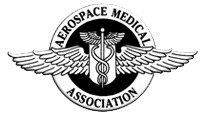- Insomnia — We have identified three basic categories of insomnia:Transient insomnia lasts only a few nights and is usually brought on by stress, excitement or a change in sleep timing or environment.
Short-term insomnia is poor sleep spanning two or three weeks and can be caused by ongoing stress, as well as medical or psychiatric problems. Alleviating the source will usually return sleep to normal. Recurring episodes are common.
Chronic insomnia lasts more than a month and can be related to underlying medical, behavioral or psychiatric problems, such as depression.
- Sleep Apnea — A potentially life-threatening disorder, sleep apnea is literally a “lack of breath” generally signified by loud snoring. There are three basic types: Obstructive apnea is the most common and severe type. The muscles at the back of the throat relax to the point of obstructing the upper airway.Breathing can actually stop for 10 seconds or more causing mini-awakenings, which are usually not remembered, several hundred times a night as the sleeper gasps for air. Loud snoring is common. Central apnea is when the airways stay open but the diaphragm and chest muscles stop working and the sleeper must awaken several times a night to resume breathing, sometimes with a gasp. Sufferers of this relatively uncommon disorder may complain of insomnia or restless sleep. Snoring may not be a symptom.
Mixed apnea is a combination of the two, usually a brief period of central apnea followed by a longer period of obstructive apnea. The combination is common. Complications arising from sleep apnea can include high blood pressure, increased risk of heart attacks and stroke, and even heart failure in severe cases.
- Narcolepsy — For sufferers of narcolepsy, the need for sleep is frequent and irresistible. “Sleep attacks” can happen anytime, during a conversation or even while driving, and last a few seconds or more than 30 minutes.Narcolepsy affects the part of the brain that regulates sleep and wakefulness, resulting in the sudden onset of REM, or rapid eye movement, sleep. Symptoms typically begin between puberty and age 25. They may develop slowly over months or years, and excessive daytime sleepiness is generally the earliest sign. There is no existing cure for narcolepsy, but lifestyle changes may help.
- Restless Legs Syndrome — Tingling, crawling or prickling sensations in the legs characterize restless legs syndrome, or RLS. It is most common in people over age 65. Rubbing the legs, getting up and walking around, or taking a hot shower usually offers only temporary relief. The discomfort and sleeplessness that accompany RLS can lead to serious psychological distress and depression. There is no cure for this disorder, but a number of prescription medications are being used to treat it.



